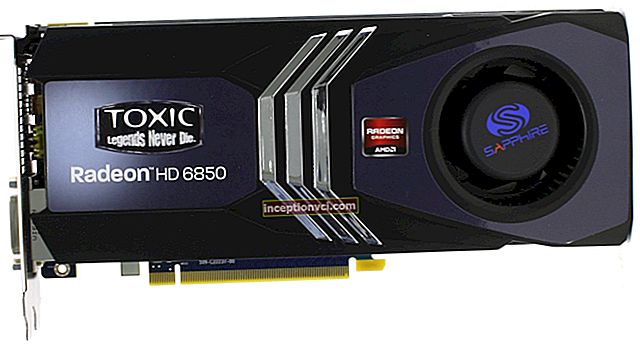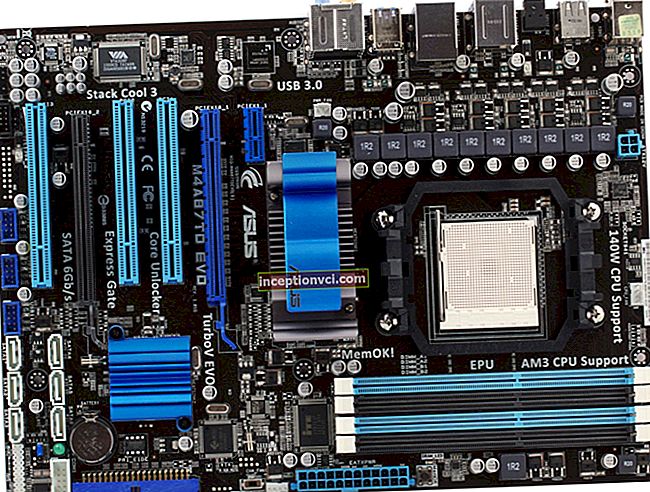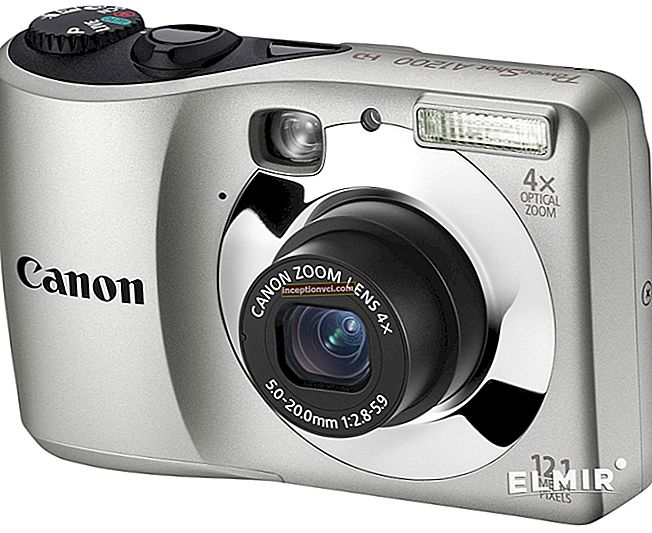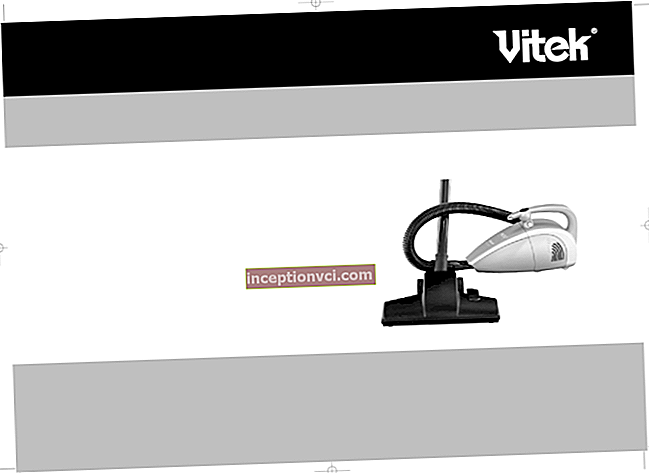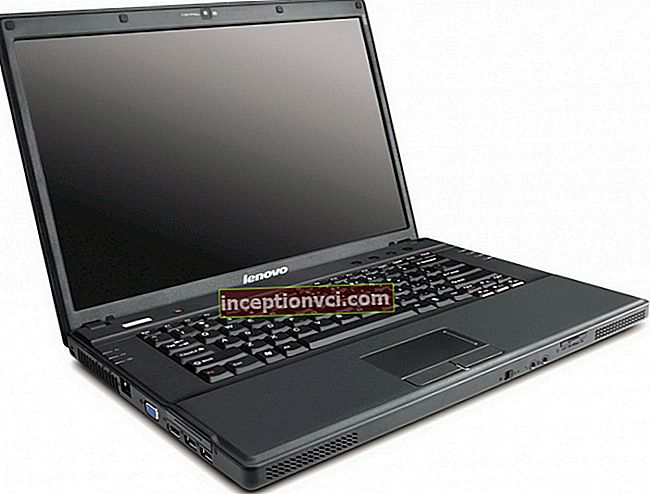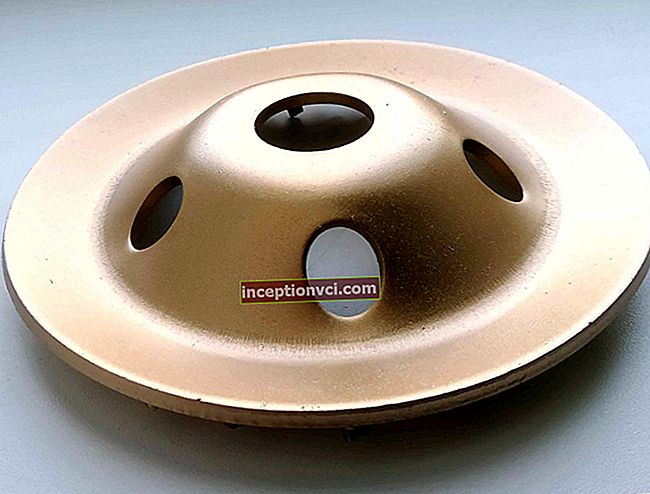# 1. If the washing intensity has decreased
- Cause: loose belt.
- Remedy: turn off the washing machine. Adjust the belt tension by moving the electric motor along the sub-frame.
- Cause: the mains voltage has dropped.
- Remedy: turn on the machine through a step-up transformer.
- Cause: restarting the machine with laundry.
- Remedy: Load no more than 1.5 kg of dry laundry into the machine.

# 2. The electric motor is running, but the activator does not rotate
- Cause: the belt came off.
- Remedy: Turn the machine over and put the drive belt on the pulleys of the electric motor and activator.
Number 3. When turned on, the electric motor hums, does not rotate the activator and after a few seconds it turns off
- Cause: the activator is pressed against the linen.
- Remedy: turn off the machine, release the activator and start the machine again after 5-10 minutes. The laundry is loaded after starting the machine.
- Cause: The belt is too tight.
- Remedy: turn off the machine. Adjust the belt tension.
- Cause: the mains voltage has dropped.
- Remedy: reschedule washing or turn on the machine through a step-up transformer.
- Cause: Activator stuck.
- Remedy: turn off the machine, turn the activator by hand and, if it rotates freely, turn on the machine. If the activator does not rotate freely by hand, turn the machine upside down, disassemble the activator assembly, clean the axle and replace the unusable gaskets and washers.
No. 4. Water leaks from under the machine
- Cause: The clamp of the drain hose is loose.
- Remedy: Tighten the clamp screw.
- Cause: The drain hose is damaged.
- Remedy: Cut off the damaged section of the hose or replace the hose with a new one.
- Cause: The nut of the activator support is loose.
- Remedy: Tighten the nut for the activator support.
- Cause: The sealing gasket of the activator is damaged.
- Remedy: disassemble the activator assembly. Replace the gasket.
- Cause: tank damaged.
- Remedy: locate the leak in the washing tub and solder or replace the tub with a new one.
No. 5. The machine makes noise during operation
- Cause: the activator clings to the tank.
- Remedy: disassemble the activator, adjust the gap between the disc and the tank. Eliminate the sag for the washing tub.
- Cause: overvoltage in the network.
- Remedy: turn on the machine via a step-down transformer. Check the voltage with a voltmeter.
- Cause: the bushings in the activator support are loose.
- Remedy: disassemble the activator, replace the support.
- Cause: invalid activator axis.
- Remedy: disassemble the activator, replace the activator with the axis.
No. 6. The activator grabs and tears the laundry during washing
- Cause: The tank is loaded with laundry before starting the machine.
- Remedy: turn off the machine, remove the laundry, start the machine and load the laundry into the tub.
- Cause: increased longitudinal play of the activator in the support.
- Remedy: disassemble the activator assembly, reduce the longitudinal backlash. The backlash of the activator axis is allowed no more than 0.5 mm.
- Reason: the gap between the activator and the tank is increased.
- Remedy: disassemble the activator assembly. Adjust the gap between the activator and the tank. The gap should be between 1.0–1.5 mm.
- Cause: Insufficient amount of solution in the tank.
- Remedy: The solution level should correspond to the dispensing on the tank.
- Cause: The disc or axis of the activator is bent.
- Remedy: disassemble the activator assembly, replace the disc with the activator axis.
No. 7. The motor gets very hot
- Cause: overloading the machine with laundry.
- Remedy: load no more than 1.5 kg of dry laundry into the machine.
- Cause: The belt is too tight.
- Remedy: Turn the machine upside down, adjust the tension of the drive belt.
- Cause: Defective motor.
- Remedy: repair or replace the motor with a new one.
No. 8. The wringer rollers are skewed
- Cause: the insert is inverted.
- Remedy: disassemble the wringer, refit the liner or replace with a new one.
No. 9. Top roller does not turn over
- Cause: the upper insert has become unusable.
- Remedy: it is necessary to disassemble the squeezing device and replace the upper insert.
- Cause: The upper insert has turned over.
- Remedy: disassemble the wringer and put the upper insert back in place.
No. 10. Wringer rollers are sticky and shaggy
- Cause: Rollers wiped with solvent or poor quality rubber.
- Remedy: disassemble the wringer and replace the rollers.
No. 11. Rubber hose burst
- Remedy: Pre-dry the damaged part of the hose and carefully file it with a file. Lubricate the break with rubber glue, wrap it with 3-4 layers of fabric insulating tape, medical adhesive plaster is also suitable, smearing each layer with glue.
No. 12. When you turn on the machine in the "spin" mode, the electric motor does not work
- Cause: Broken connection cord or defective plug.
- Remedy: Eliminate the break in the cord and tighten the cable fixing to the pins of the plug or replace the connecting cord and plug with a new one.
- Cause: open circuit wires.
- Remedy: check the reliability of fastening the wires of the electrical circuit to the clamps, find the breakage point and fix it.

- Cause: Time relay defective.
- Remedy: replace the time relay.
- Cause: The thermal relay is defective.
- Remedy: replace the thermal relay.
- Cause: the start button is not working properly.
- Remedy: repair or replace the start button with a new one.
- Cause: faulty switch or packet switch.
- Remedy: repair or replace the switch or circuit breaker with a new one.
- Cause: the working winding of the electric motor has burnt out.
- Remedy: repair the motor or replace it with a new one.
- Cause: Defective microswitch.
- Remedy: replace the microswitch with a new one.
- Cause: the mains voltage is below the permissible limit.
- Remedy: turn off the electric motor and postpone the wash for another time of the day.
No. 13. When you turn on the machine in the "wash" mode, the electric motor hums, but does not rotate
- Cause: the activator unit is skewed, the activator disc is touching the divider, the grate or the bottom of the washing tub.
- Remedy: disassemble the activator assembly and repair or replace the assembly with a new one, straighten the tank.
- Cause: the starting capacitor is broken, in electric motors with capacitor starting.
- Remedy: replace the capacitor with a new one.
- Cause: The centrifugal switch is defective (in the electric motors where it is installed).
- Remedy: Remove the motor from the chassis of the machine, press off the end shield, adjust the centrifugal switch or replace it with a new one.
- Cause: either the starting or working winding is burnt out.
- Remedy: rewind the winding or replace the motor.
- Cause: Defective starting relay.
- Remedy: replace the relay with a new one.
- Cause: lack of contact in the machine circuit or failure of the starting winding of the electric motor.
- Remedy: Correct the outer contact in the machine circuit.
No. 14. When you turn on the machine in the "wash" mode, the electric motor overheats and stops during operation
- Cause: Laundry has fallen under the activator disc.
- Remedy: take out the laundry, disassemble the activator unit, assemble the activator unit and adjust the radial clearance between the activator disc and the bottom of the washing tub or grill.
- Cause: turn-to-turn circuit or short circuit between the starting and working winding.
- Remedy: repair the motor or replace it with a new one.
No. 15. When the machine is turned on in the "wash" mode, the electric motor works, but the activator does not rotate
- Cause: The tension of the activator drive belt is loose.
- Remedy: adjust the belt tension.
- Cause: The activator drive belt has slipped off the pulleys.
- Remedy: Put the belt on the pulleys of the electric motor and activator and adjust the belt tension.
- Cause: the pulley turns on the axis of the activator or on the shaft of the electric motor.
- Remedy: Fasten the pulley to the actuator shaft or to the motor shaft. Replace defective pulleys with new ones.
No. 16. When the machine is turned on in the "spin" mode, the centrifuge drive motor does not work
- Cause: The carbon brushes of the electric motor are worn out, in the collector motor.
- Remedy: Unscrew the brush holder caps and replace the unusable carbon brushes with new ones.
- Cause: Defective motor.
- Remedy: replace the motor with a new one.
- Cause: fuse blown.
- Remedy: replace the fuse with a new one.
- Cause: Defective step-down transformer.
- Remedy: rewind the transformer or replace with a new one.
- Cause: faulty packet switch or switch.
- Remedy: repair or replace with a new circuit breaker or switch.
- Cause: The micro switch for blocking the centrifuge is defective.
- Remedy: replace the micro switch with a new one.
- Cause: Time relay defective.
- Remedy: replace the time relay with a new one.
No. 17. When you turn on the machine in the "spin" mode, the electric motor hums, but does not rotate
- Cause: The motor is overloaded (the centrifuge tank is overfilled with water).
- Remedy: lower the drain hose as low as possible and drain some of the solution from the tank.
- Cause: The centrifuge brake is applied.
- Remedy: Place the machine on its side and adjust the brake position or the length of the tie rod.
- Cause: The centrifuge drive belt is too tight.
- Remedy: adjust the belt tension.
- Cause: Laundry has entered the centrifuge tank.
- Remedy: remove the centrifuge and laundry from the tank. Reinstall the centrifuge.
No. 18. When you turn on the machine in the "spin" mode, the electric motor works, but the centrifuge does not rotate
- Cause: The tension of the centrifuge drive belt is loose.
- Remedy: adjust the belt tension.
- Cause: slipped the belt onto the pulleys and adjust the tension.
- Remedy: Tighten the fastening of the pulley to the shaft. Replace the defective pulley with a new one.
No. 19. When you turn on the machine in the "spin" mode, the centrifuge swings strongly and hits hard against the walls of the tank

- Cause: The laundry is unevenly placed in the centrifuge.
- Remedy: switch off the machine, remove the laundry from the centrifuge and place it evenly.
- Cause: The bushings of the rubber diaphragm are worn out.
- Remedy: replace the bushings with new ones. Solution flows in the weld seam of the washing tank or centrifuge tank.
- Cause: Defective washing tank or centrifuge tank.
- Remedy: repair the tank or replace it with a new one.
No. 20. The solution flows in the connection of the hoses with the nozzles of the pump of the crane, tank or drain valve
- Cause: The straps are loose or the hoses are damaged.
- Remedy: Retighten the hose clamps on the connections or replace the hoses with new ones.
No. 21. The solution flows in the seal of the activator assembly with the bottom of the washing tank
- Cause: The attachment of the activator assembly to the bottom of the washing tub is loose or the paranite gasket is damaged.
- Remedy: Tighten the activator assembly to the bottom of the washing tub. Replace the unsuitable paranite gasket with a new one.
No. 22. Solution flows along the axis of the activator
- Cause: The rubber lip of the axle seal and the bronze-graphite bushings of the support are worn out.
- Remedy: Remove and disassemble the activator assembly. Replace rubber sleeves and bronze-graphite bushings with new ones.
No. 23. Solution flows at the junction of the diaphragm with the bottom of the centrifuge tank
- Cause: The rubber diaphragm is loose on the bottom of the centrifuge tank or the diaphragm is damaged.
- Remedy: tighten the diaphragm to the bottom of the tank or replace the diaphragm with a new one.
No. 24. Solution flows along the centrifuge shaft axis
- Cause: The rubber collars of the centrifuge shaft seal and the bronze-graphite bushings or bearings are worn out.
- Remedy: remove the diaphragm assembly with bearing (support) from the bottom of the centrifuge tank and disassemble it. Replace rubber sleeves and bronze-graphite bushings with new ones.
No. 25. The solution flows in the seal of the cover and the pump housing
- Cause: The cover is loose on the pump casing or the rubber gasket between them is damaged.
- Remedy: Tighten the cover fixing to the body. Replace the defective gasket with a new one.
No. 26. Solution flows along the axis of the drain valve
- Cause: The rubber seal of the valve shaft is worn out.
- Remedy: remove and disassemble the drain valve. Replace the rubber cuff with a new one.
No. 27. The solution flows along the axis of the pump impeller
- Cause: The rubber collars of the impeller shaft seal and the bronze-graphite bushings are worn out.
- Remedy: disassemble the pump and replace the collars and bushings with new ones.
No. 28. The pump does not pump out the solution
- Cause: The pump is clogged or the impeller is broken.
- Remedy: remove and disassemble the pump. Clean and flush the pump from dirt. Replace the broken impeller with a new one.
No. 29. Solution flows through the cover or pump housing
- Cause: The cover or pump housing is cracked.
- Remedy: remove and disassemble the pump. Replace the defective cover or pump housing with new ones.
No. 30. The valve or drain valve does not shut off the solution in the tanks
- Cause: valve defective.
- Remedy: remove the drain cock or valve and replace the valve with a new one.
No. 31. Water from the washing tank flows into the centrifuge
- Cause: The bypass valve is clogged.
- Remedy: Drain the water using a pump or by gravity. Turn the machine to one side, remove and flush the valve.
No. 32. The water is not pumped out by the pump

- Cause: The drain hose is kinked.
- Remedy: straighten the hose.
- Cause: Laundry dropped out of the centrifuge closes the drain hole in the bottom of the centrifuge tank.
- Remedy: Tilt the centrifuge to the side and remove the laundry from the tub. To prevent small items from falling out of the centrifuge, place a safety net on top of the items.
No. 33. The centrifuge motor is switched off by a protective relay
- Cause: There is a lot of water in the centrifuge tank: The bottom of the centrifuge rotor is below the surface of the water.
- Remedy: Drain some of the water by gravity by lowering the hose below the level of the bottom of the centrifuge tank.
No. 34. The pump does not pump or pumps water poorly
- Cause: The mesh of the washing tub is clogged.
- Remedy: clean the mesh.
- Cause: valve clogged.
- Remedy: clean the valve.
- Cause: pump clogged.
- Remedy: clean the pump.
- Cause: Lint build-up from the laundry in the hoses.
- Remedy: check and, if necessary, clean the hoses.
No. 35. When you turn on the power and turn the knob of the time relay, the electric motor does not work
- Cause: time relay not fully cocked.
- Remedy: Turn the timer clockwise as far as it will go.
No. 36. The motor runs, but the drum does not rotate
- Cause: The drum drive belt has come off.
- Remedy: turn off the machine, remove the side cover, put on the belt.
No. 37. The pump motor is running, but there is no drain
- Cause: The filter is clogged.
- Remedy: switch off the machine, unscrew the pump cover. Remove and clean the filter.
- Cause: Straighten the hose.
No. 38. The pointer does not work when water is poured
- Cause: The nuts of the housing are loose.
- Remedy: tighten the nuts.
- Cause: The membrane is deformed.
- Remedy: replace the diaphragm.
- Cause: The tube is damaged.
- Remedy: replace the handset.
No. 39. Water leaks from under the machine
- Cause: The tube is damaged.
- Remedy: replace the handset.
No. 40. Overflowing water from the machine
- Cause: the filter is clogged.
- Remedy: turn off the machine. Clean the filter.
- Cause: the level sensor is out of order.
- Remedy: replace the faulty level sensor.
No. 41. Red warning light is off
- Cause: the heater is out of order.
- Remedy: turn off the machine. Replace defective heater.
No. 42. Water level not visible
- Cause: The walls of the tube are dirty. The pipe is clogged.
- Remedy: remove the front wall, carefully remove the tube from the upper rubber sleeve, clean the hole with a brush.
No. 43. The centrifuge is not picking up speed
- Cause: The laundry has not been placed in the centrifuge correctly.
- Remedy: switch off the electric motor, transfer the laundry more evenly.
No. 44. Clogged pump
- Remedy: remove the pump cover by unscrewing 4 bolts, take out the impeller, clean the inner cavity of the pump from dirt. Insert the impeller into the housing, ensure the connections to the motor coupling, install and secure the cover.
No. 45. Clogged filter
- Remedy: remove and clean the filter.
No. 46. Water flows out from under the machine
- Cause: The hose clamps are loose.
- Remedy: tighten the clamps.
- Cause: The filter cover is loose.
- Remedy: Screw on the filter cover tighter.
No. 47. Electric motors do not start when turned on
- Cause: wire break.
- Remedy: find the break, repair the break and insulate the wire.
- Cause: malfunction of the electrical unit.
- Remedy: identify the faulty unit, remove and install a new one.
No. 48. The pump pumps poorly or does not pump water at all from the tank
- Cause: the mesh is clogged. Drain pipe or pump clogged. The pump pulley came off the motor pulley.
- Remedy: Remove the mesh and clean. Flush the hydraulic system with a reverse flow of water. Remove the rear cover, tighten the pump pulley until it touches the engine pulley, having previously set the pump switch knob to the “Pump on” position.
No. 49. The pump does not pump water
- Cause: The grille, drain pipe or pump is clogged.
- Remedy: Remove the grill and clean. Flush the machine with a backflow of water.
- Cause: the pump pulley has moved away from the motor pulley.
- Remedy: Put the machine with the empty tank on the floor with the remote control facing up. Without removing the front wall, grasping the end of the pump control rod from below, release it from the pump latch by a sharp movement to the right. Move the latch 3-4 notches up the pull; back to the last one, engage it with the latch.
No. 50. Liquid leaks from under the machine
- Cause: O-ring damaged.
- Remedy: Disassemble the activator assembly and replace the O-ring.
No. 51. The motor is cut off while the machine is running.
- Cause: Thermal relay tripped.
- Remedy: switch off the machine and switch on again after 10 minutes.
No. 52. When turned on in the "spin" mode, the centrifuge drive motor does not work
- Cause: The adjusting screw is not adjusted.
- Remedy: adjust the screw on the centrifuge tank lid and tighten the lock nut.
No. 53. When the machine is turned on, the electric motor hums, but the motor shaft does not rotate, and after a few seconds the engine turns off, stops humming
- Cause: O-ring of the activator "burnt" after a long break in work.
- Remedy: turn off the machine, turn the activator by hand a few turns. Switch on the machine again.
Read: "Top 5 Reasons for Malfunctioning Washing Machines"
Watch a video review of the Samsung washing machine

